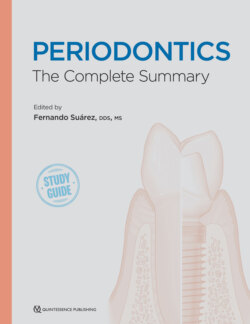Читать книгу Periodontics - Fernando Suarez - Страница 58
На сайте Литреса книга снята с продажи.
Aggressive Periodontitis
ОглавлениеThe term aggressive periodontitis has been through many modifications since 1923 when Gottlieb defined it as “diffuse alveolar atrophy.”71 Over the course of the 20th century, this inflammatory disease often changed in terminology, being referred to as periodontosis, juvenile periodontitis, and early-onset periodontitis, among others. Later, in 1999, the American Academy of Periodontology proposed the term aggressive periodontitis to refer to the highly destructive forms of periodontitis.72 This rapidly progressing type of periodontal disease has been studied for decades as a separate entity from chronic periodontitis due to its aggressive nature, familial tendencies, the location of the lesions, and the relative low or inconsistent levels of biofilm (and secondary etiologic factors) compared with the severity of periodontal tissue destruction73,74 (Fig 3-4). Other features recognized by the 1999 consensus report included patients that are otherwise healthy, rapid attachment loss and bone destruction that may be self-arresting, and phagocyte abnormalities.73
Fig 3-4 (a to f) Periodontitis (formerly referred to as aggressive periodontitis).
Nevertheless, chronic and aggressive periodontitis share many similarities, and the latest classification from the 2017 World Workshop on the classification of periodontal and peri-implant diseases and conditions refuted the presence of enough evidence to support the distinction between aggressive and chronic periodontitis as two separate diseases. This recent report emphasized the phenotypic differences between both entities, and more specifically, between chronic and localized aggressive periodontitis (including age of onset, location of initial lesions, and rate of progression). However, it also reiterated that both represent inflammatory diseases responding to biofilm accumulation, and it is premature to describe pathophysiologic differences until further data in larger and more controlled studies is available. In addition, both chronic and localized aggressive periodontitis have a common end result.62 Hence, it was concluded that while there are significant variations with regard to clinical presentations, the currently available evidence does not support the distinction between chronic and aggressive periodontitis as two separate diseases.1
